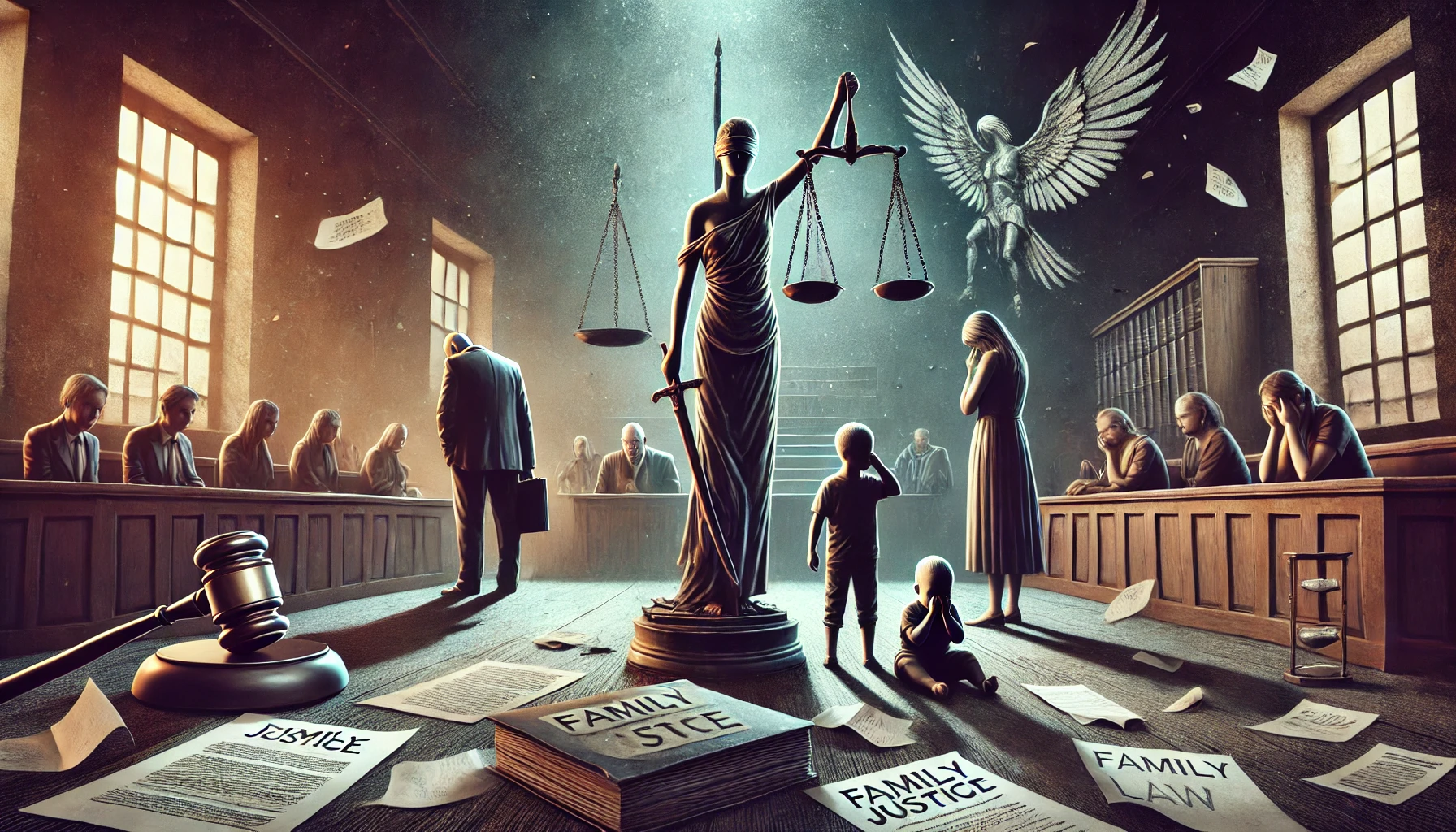Authored By: Marysowjanya Bandi
INDIRAPRIYADARSINI LAW COLLEGE ANDRAKESARY UNIVERSITY
Abstract
Technology innovations in the legal field, often referred to as Logitech, are transforming how legal services are delivered. Key trends include AI-powered tools for document review, predictive analytics, smart contracts, and cloud computing, leading to increased efficiency, reduced costs, and improved client service. These advancements are revolutionizing traditional legal processes, making them faster, more accurate, and more accessible. By embracing technology’s transformative power while proactively addressing its ethical and societal implications, we can create a legal landscape that upholds justice, embraces innovation, and empowers individuals in the digital age. Key areas for exploration and action include deskilling legal workforces to adapt to technological advancements, establishing ethical frameworks for AI in law, strengthening cyber security and data protection measures, and leveraging technology to enhance access to justice for all. After at most care for cyber security the crime sentence to represent the mark.Severel cases resonate the capacity of cyber crimes. By working together, we can harness the power of technology to create a legal system that is both innovative and just, serving the needs of all in the digital age. The path ahead demands thoughtful collaboration, responsible innovation, and a steadfast commitment to the core values of justice and equity. By navigating this journey with care and foresight, we can shape a legal future that embraces technology’s promise while upholding the fundamental principles of fairness and equality.
Introduction
The legal field, traditionally known for its adherence to established procedures, is undergoing a significant transformation due to technological advancements and the growing need for innovation. This introduction explores the impact of Logitech on legal practice, highlighting its role in enhancing efficiency, accessibility, and the very nature of legal work. While the legal profession has been somewhat slow to adopt change, the current landscape demands a more agile and adaptable approach, driven by both the potential benefits of technology and the changing expectations of clients and the wider public.
The forecast about the innovation and technology introduced in legal world. From starting establishment and continuity till now.
The elaboration of each technology its abilities towards legal field in all aspects. ∙ Challenges faced by the technology with cases in the courts. Efficiency of technology works out.
Logitech encompasses a wide range of technologies, including artificial intelligence, block chain1, cloud computing2, and data analytics, all of which are reshaping how legal services are delivered. For example, AI-powered tools are revolutionizing legal research by quickly sifting through vast amounts of data to identify relevant case law and precedents, saving lawyers significant time and effort. Document automation software streamlines the creation of standard legal documents, reducing the risk of errors and freeing up lawyers to focus on more complex tasks.
The increasing adoption of Logitech also addresses the need for greater accessibility to legal services. Cloud-based platforms enable lawyers to work remotely, collaborate more effectively with clients, and provide legal advice to individuals who might otherwise be unable to afford traditional legal representation. Furthermore, legal design principles, which emphasize user centered design and clear communication, are being applied to legal documents and processes to make them more understandable and user-friendly.
While the integration of technology in law offers numerous advantages, it also presents challenges. One concern is the potential for bias in algorithms, which could disproportionately affect certain groups of people. Cyber security is another critical issue, as legal firms handle sensitive client information and must ensure its protection from cyber threats. Ensuring that lawyers receive adequate training and support to effectively utilize these new technologies is also crucial.
The establishment of the technology in legal world
In the early 1950s, technology companies began marketing their products to law firms, marking the beginning of their journey. Thomas Edison invented sound recording in 1877 with the invention of the phonograph, a device that could record and replay sounds. It wasn’t until 1953 that the legal industry learned about this innovation, as dictation machines were first made available to law firms. It proved to be a remarkably self-sufficient method in which the lawyer could reproduce recorded material wherever and whenever necessary. Until 1970s, much of a lawyer’s time revolved around searching through books for case law. But in 1973, Lexis developed the red “UBIQ” terminal, which allowed attorneys to look up case law online and completely transformed the legal industry. With the introduction of a word processing microprocessor by Wang Laboratories, the emphasis shifted from document searching to document creation. This happened around the period that personal computers began to be used in offices across America. By 1979, many law firms had invested in Wang or comparable devices, which made document generation a simple and speedy procedure. With the advent of fax machines, legal firms no longer needed courier services to complete documents; instead, the time it took to complete a document and deliver it to a customer was reduced from days to minutes. The initial widely available desktop computer for office use was the “Personal Computer,” produced by International Business Machines (IBM) in 1981. Summation and concordance, the first litigation assistance software products, were released in the late 1980s. While it had started several years earlier in other industries, it was surprising but true that legal businesses could not send emails to external computers and networks till the late 1990s. Thus, using networked computers, lawyers can communicate with external clients in minutes, saving a significant amount of time. E-commerce businesses like eBay employed online dispute resolution, or ODR, for the first time in the 1990s to settle disagreements between customers and sellers. Since then, it has shown to be helpful in the legal field to remove obstacles that keep some citizens from using the courts. Electronic filing systems were introduced in the late 1990s which significantly altered the legal environment for federal judges and attorneys. Online filing extended filing hours beyond court facilities’ actual opening hours and removed the need for in person document filing. All parties involved can examine case files simultaneously in real time with online filing and document review, which expedites the legal process and does away with mountains of printed documentation. Initial versions of the case management system had limitations since they were difficult to use and many legal firms were still using DOS. When Windows 3.1 was published by Microsoft Corporation, it became the most popular version and finally replaced DOS3. Later on, case management systems underwent a radical makeover that made extensive use of many of the contemporary technological tools available to lawyers. This allowed them to handle client cases more easily and obtain the information they required. Virtual legal offices, a technology that allows people to work virtually eliminating the need for physical office space, initially opened their doors in the early 2000s. Cloud-based software was launched into the legal industry at the same time. Fisher Broyles LLP4, a completely virtual law firm, was the initial full-service law firm in the United States to depend entirely on cloud-based technology. The Federal Rules of Civil Procedure (FRCP) were updated in 2006 to take into account the increasing volume of electronically shared material that might be discovered during legal proceedings. Google and Amazon started referring to online hardware and software services as “Cloud computing.” In civil action, the practice of providing pertinent electronic data, documents, and proof is known as electronic discovery, or rediscovery. Website pages, digital documents, accounting databases, and correspondence like emails, texts, and chat logs can all be included. The first review-integral legal tablet application was released in 2012; smart contracts emerged as a protocol on top of Block chain technology to carry out contract terms in 2013–14; IBM5introduced ROSS, the world’s first artificially intelligent lawyer, in 2016–2020; Westlaw Edge, the next generation of its industry leading legal platforms, and a host of other technological innovations in recent years. ROSS created a legal research platform that provided firms with legal aid, reduced the amount of time they needed to conduct research, and produced better outcomes. Not only could ROSS search through over a billion text documents per second, but it also improved over time by taking feedback into account. That was the end of the days of having to laboriously sort through countless database and internet search results by hand. Chat bots became popular by 2016, and the legal industry began to embrace them as a way to make customer service more scalable and as the human face of artificial intelligence (AI). DoNotPay, created by Joshua Bowder, was one of the first chatbots pertaining to justice. Known for nullifying parking tickets and helping refugees with immigration applications and asylum support, it is sometimes referred to as “robot lawyers.” Following are LawBot and DivorceBot, which were built by students at Cambridge University, and LISA (Legal Intelligence Support Assistant), a non-disclosure agreement generator that Chrissie Lightfoot constructed at the end of 2016. Before the COVID-19 outbreak, video conferencing was used in courtrooms; nonetheless, lockdowns accelerated the rate at which virtual hearings and testimony were introduced into numerous courts. Due to the lack of need to travel to a physical courthouse, virtual hearings can be more convenient and time-efficient than in-person ones, in addition to enabling the legal sector to operate during the epidemic. Technical problems with hardware, software, internet connections, and security continue to be a barrier to the use of video conferencing in the legal field.
Innovated technologies and its implication in legal fields
- Artificial Intelligence (AI):
AI-powered document review:
AI tools can quickly analyze large volumes of legal documents, identifying key information and potential issues, saving time and reducing errors.
Predictive analytics:
AI algorithms analyze historical case data to predict potential outcomes, helping lawyers make more informed decisions.
Chat bots and virtual assistants:
These tools handle routine client inquiries and provide instant access to legal information, freeing up lawyers for more complex tasks.
AI-driven legal research:
AI tools can sift through vast databases of legal information, identifying relevant precedents and laws, significantly speeding up research.
- Automation:
Contract automation:
AI and automation are used to draft, review, and manage contracts, improving efficiency and accuracy.
Workflow automation:
Routine tasks like document management and data entry are automated, streamlining legal processes.
- Cloud Computing:
Remote access and collaboration:
Cloud-based platforms enable lawyers to access case files, communicate with clients, and collaborate on projects from anywhere, improving accessibility and flexibility.
Cost savings:
Cloud computing can reduce the need for expensive on-premise hardware and software, leading to cost savings for law firms.
- Other Emerging Technologies:
Virtual Reality (VR) and Augmented Reality (AR):
These technologies can be used to recreate crime scenes, enhance document examination, and train legal professionals.
Block chain and smart contracts:
Block chain technology is enabling the creation of smart contracts that automatically execute and enforce agreements, reducing the need for manual intervention.
Remote depositions and virtual courtrooms:
These technologies have become more prevalent, especially after the pandemic, allowing for remote participation in legal proceedings.
- Legal Tech Marketplaces and Platforms:
Connecting clients with lawyers:
Online platforms are connecting clients with lawyers and providing tools for client relationship management.
Technology aids in solving cases:
- DNA Analysis:
Identification:
DNA profiling, fingerprint analysis, and facial recognition techniques are used to identify suspects and link them to crimes with a high degree of accuracy.
Cold Case Resolution:
DNA evidence from cold cases, even after decades, can be used to identify perpetrators, as seen in the 45-year-old murder case of Nancy Marie Bennallack.
Exoneration:
DNA evidence can also be used to exonerate individuals wrongly convicted, highlighting the importance of advanced forensic techniques.
- Digital Forensics:
Cybercrime Investigation:
Digital forensics helps track cybercriminals by analyzing IP addresses, malware, and digital trails left behind in cyber attacks and online crimes.
Evidence of Intent:
Digital evidence, like emails, phone records, and social media activity, can reveal a suspect’s intent, location, and relationships with other individuals involved in a crime.
Fraud and Financial Crimes:
Transactional data, online records, and financial logs are crucial in investigating financial fraud, theft, and other white-collar crimes.
- Other Forensic Technologies:
X-ray Fluorescence (XRF):
XRF analysis helps determine the elemental composition of samples, aiding in the analysis of materials found at crime scenes.
Biometrics:
Biometric technologies like facial recognition and fingerprint analysis have become integral in identifying individuals and linking them to crimes.
Specialized Software and Tools:
Forensic technology utilizes specialized software and tools to examine physical evidence, extract information, and analyze data from various sources.
Examples of Cases Solved with Technology:
BTK Killer:
The BTK (Bind, Torture, Kill) Killer, Dennis Rader, was apprehended after evading law enforcement for over 30 years, thanks to digital forensics and data recovery.
The Waifu Hacker:
A cybercriminal known as the “Waifu” hacker was identified and apprehended through forensic analysis of digital evidence.
Ransomware Attacks:
Technology has been instrumental in tracking and apprehending individuals involved in ransomware attacks, like the attack on Ireland.
Cold Case Murders:
Numerous cold cases have been solved using DNA evidence and forensic genealogy, as seen in the 1956 double homicide in Montana.
Challenges and Limitations:
Preservation and Collection:
Proper preservation and collection of digital evidence are crucial for its admissibility in court.
Data Integrity:
Ensuring the integrity and authenticity of digital evidence is essential to avoid tampering and manipulation.
Cost and Accessibility:
Advanced forensic technologies can be expensive and may not be readily accessible to all law enforcement agencies.
In conclusion, technology has become an indispensable tool in modern criminal investigations, providing investigators with powerful means to gather, analyze, and interpret evidence, leading to the resolution of complex cases and ensuring justice for victims.
challenges dealth with technology in legal field:
Technology faces several challenges, including data security, digital transformation hurdles, and the need for robust cyber security measures. Other significant challenges include integrating new technologies with existing systems, ensuring data privacy and ethical considerations, and addressing the skills gap among users and IT professionals.
Here’s a more detailed breakdown:
Data-related challenges:
∙ Data Security:
Protecting sensitive data from breaches and cyber attacks is crucial, especially with the increasing sophistication of cyber threats.
∙ Data Privacy:
Ensuring compliance with privacy regulations and safeguarding user data from misuse is a major concern, particularly with the rise of AI and data analytics.
∙ Data Management:
Organizing, storing, and analyzing vast amounts of data are a challenge, requiring efficient and scalable solutions.
Digital Transformation Challenges:
Legacy System Integration:
Integrating new technologies with outdated infrastructure can be complex and costly, hindering innovation.
Lack of Strategic Planning:
Digital transformation efforts require a clear roadmap and alignment across different departments, which is often lacking.
Measuring Success:
Defining and tracking the return on investment (ROI) of digital initiatives can be challenging, making it difficult to assess their effectiveness.
Cyber security Challenges:
Evolving Threats:
Cybercriminals are constantly developing new attack methods, requiring organizations to constantly update their security measures.
Skills Gap:
There’s a shortage of cyber security professionals, making it difficult to implement and maintain robust security systems.
IoT6 Vulnerabilities:
The Internet of Things (IoT) devices, with their varying levels of security, present new attack vectors for cybercriminals.
Other Challenges:
Skills Gap:
Rapid technological advancements require continuous learning and up skilling of employees to adapt to new technologies.
Ethical Considerations:
The use of AI7and other emerging technologies raises ethical concerns about bias, fairness, and potential misuse.
Cost of Implementation:
Adopting new technologies and maintaining them can be expensive, requiring significant investments in infrastructure, software, and training.
Dark shades of technology in cases
- Shreya Singhal v. Union of India (2015)
Keyword: Section 66A, Freedom of Speech Online
- Avnish Bajaj v. State (2005) – the Bazee.com case
Keyword: Cyber Liability, Obscene Content Online
- Google India Pvt. Ltd. v. Visaka Industries (2020)
Keyword: Intermediary Liability, Defamation.
Conclusion
These research admires that the innovation and technology make their standard mark in legal world .In future it will lead the legal world is sure. At the same time challenges be defenate.The even more advancement in technology the lawyer’s inclusion is very accepted to every legal work process. The technical courses are very expensive to learn.Updation is the more relevant factor for legal professionals.
References:
- A History of How Technology Has Transformed the Legal Field https://zapproved.com/blog/a-history-ofhow-technology-has-transformed-the-legal-field/
- Hans Paul Pizzinini- History of Tech in Lawhttps://www.linkedin.com/pulse/history-tech lawrevisit-how-far-technology-has-come-pizzinini/
- Patrick Davis- A (Very) Brief History of Legal Technology https://www.smokeball.com/blog/a-briefhistory-of-legal-technology
- Lauren Colbeck- The history of law firm automationhttps://www.lawsociety.org.uk/topics/ai andlawtech/the-history-of-law-firm-automation.
- Jaskaran Juneja- Advantages of Technology in the legal Industry/ Downsides of Technology in the legal Sectohttps://www.allthingslaw.in/impact-of-technology-onlegal-research 6. V.V.S.SAI RAM- The Impact of AI and Technology on Law https://www.legalserviceindia.com/legal/article12686-the-impact-of-ai-and-technology-on law.html
- The Impact of Artificial Intelligence on the Legal Profession- https://timespro.com/blog/the impact-ofartificial-intelligence-on-the-legal-profession
- Dr. Inderpreet Kaur and (Late) Mr. Chander Gopal Puri- Impact of Artificial Intelligence on Legal Industry- https://ijlmh.com/paper/impact-of-artificialintelligence-on-legal-industry/ 9. Khushi Patel & Aahini Gandhi- Analysing The Impact of Artificial Intelligence on Legal Research and Legal Education- https://thelawbrigade.com/wpcontent/uploads/2023/09/Khushi Aahini-IJLDAI.pdf
- Peeyush Singh- Role of Technology in Legal Sectorhttps://appinventiv.com/blog/technology in-legalsector/
- Kapil Panchal- Technology’s Impact on the Legal Profession: A Double-Edged Swordhttps://www.ifourtechnolab.com/blog/technology-simpact-on-the-legal-profession-a double-edged-sword
- Joshua Ayeseteminikan- Impact of Technology On The Legal Professionhttps://www.linkedin.com/pulse/impact-technologylegal-profession-joshua ayeseteminikan/
- Role and Future of Legal Technology in the Indian Judicial Systemhttps://www.freelaw.in/legalarticles/Role-and-Futureof-Legal-Technology-in-the-Indian Judicial-System
- Siddhartha Gupta- Legal Professions Resistance to Technology https://theamikusqriae.com/how-thetechnology-has-rocked-the-legal-profession-world letsexplore-the-upsides-and-downsides-of-this-epicdisruption/
- Challenges faced by the Legal Industryhttps://appinventiv.com/blog/technology-in legalsector/
- Will AI Replace Lawyers?- https://www.clio.com/resources/ai-for-lawyers/will-aireplace lawyers/
- 3 reasons why generative AI will not take over lawyer jobs https://legal.thomsonreuters.com/blog/will-aitake-over-lawyer-jobs-3-reasons-to-object
1It meant decentralized,distributed ,and immutable digital ledger that stores information in blocks
2 On demand delivery of the computing service
3 Disk operating system
4Limited liability patnership
5International business machines
6Internet of things





